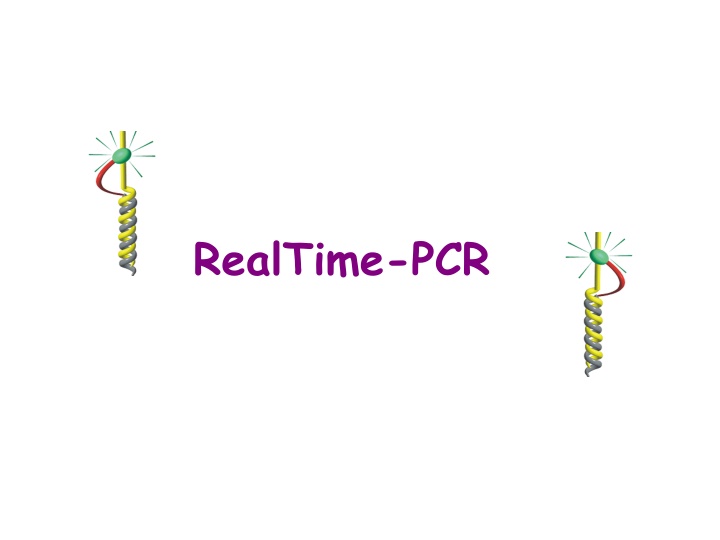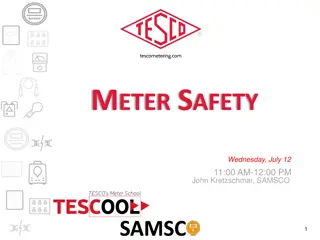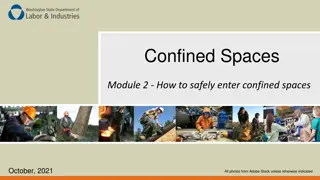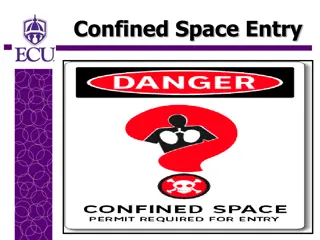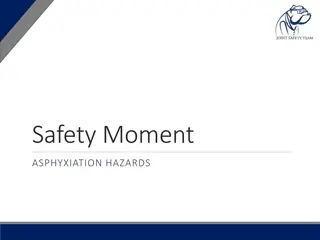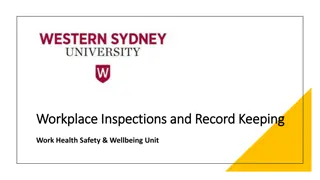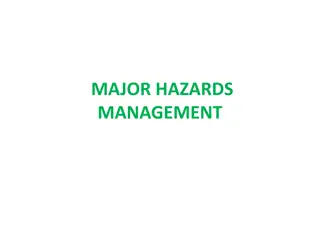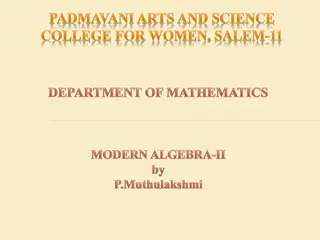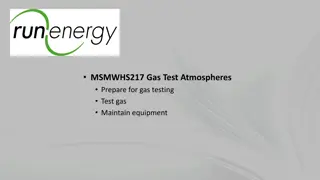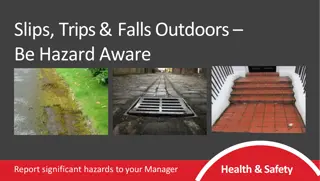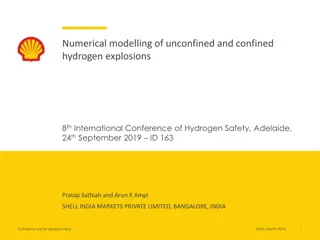Agricultural Confined Spaces: Hazards and Safety
Agricultural confined spaces pose potential physical and toxic hazards to workers. Learn about key terms, types of confined spaces, associated hazards, OSHA standards, and risk reduction practices for emergencies.
Download Presentation

Please find below an Image/Link to download the presentation.
The content on the website is provided AS IS for your information and personal use only. It may not be sold, licensed, or shared on other websites without obtaining consent from the author.If you encounter any issues during the download, it is possible that the publisher has removed the file from their server.
You are allowed to download the files provided on this website for personal or commercial use, subject to the condition that they are used lawfully. All files are the property of their respective owners.
The content on the website is provided AS IS for your information and personal use only. It may not be sold, licensed, or shared on other websites without obtaining consent from the author.
E N D
Presentation Transcript
Whats Wrong With Agarose Gels? Low sensitivity Non-automated End point analysis
Working of QPCR? Real Time PCR is a technique in which probes bind to specific target regions of amplicons (GOI) to produce fluorescence during PCR. The fluorescence, measured in Real Time, is detected in a PCR cycler with an inbuilt filter flurometer. In molecular biology, a hybridization probe is a fragment of DNA or RNA of variable length (usually 20 30 bases long) which can be radioactively labeled. It can then be used in DNA or RNA samples to detect the presence of nucleotide sequences (the DNA target) that are complementary to the sequence in the probe.
dsDNA BindingDye SYBR Green I TaqMan Probe
Sybr Green PCR Assay Stronger signal Higher selectivity for dsDNA Lesser sequence dependent Higher stability Binds to Non specific PCR product Primer dimer
TaqMan Probe When intact, the fluorescence of the reporter is quenched due to its proximity to the quencher Probe hybridizes to the target dsDNA-specific 5' >3' exonuclease activity of Taq cleaves off the reporter Reporter is separated from the quencher. Fluorescent signal Signal is proportional to the amount of amplified product in the sample
TaqMan Probe Advantages Highly fluorogenic Easy PCR setup Sequence-specific detection Disadvantages Expensive Probe design and positioning challenging Similar conditions for primers and probes
Real-Time PCR Terminology Amplification plot is the plot of fluorescence signal versus cycle number. Initial cycles of PCR, there is little change in fluorescence signal. This baseline of amplification plot. defines the An increase in fluorescence above the baseline indicates detection of accumulated PCR product. The parameter CT(Threshold cycle) is defined as the fractional cycle number at which the fluorescence passes the fixed threshold.
Ct Values: 5000000 4500000 4000000 3500000 3000000 2500000 25 28 23 2000000 1500000 1000000 500000 0 0 5 10 15 20 25 30 35 40
Reverse Transcription (RT) PCR RT-PCR : a highly sensitive technique for the detection and quantitation of mRNA (messenger RNA). The technique consists of two parts: The synthesis of cDNA (complementary DNA) from RNA by reverse transcription (RT) and. The amplification of a specific cDNA by the polymerase chain reaction (PCR).
Relative Quantification Housekeeping expressed gene. Expression level of these genes remains constant. eg 18 S rRNA, GAPDH, Actin gene: Abundantly and constantly Normalization: To accurately quantify gene expression, the measured amount of RNA from the gene of interest is divided by the amount of RNA from a housekeeping gene measured in the same sample to normalize for possible variation in the amount and quality of RNA between different samples.
Application in Molecular Diagnostics Clinical microbiology and Food microbiology Gene expression viral quantitation Single Nucleotide Polymorphism (SNP) analysis Cancer Analysis of cellular immune response in peripheral blood Chromosome aberrations
